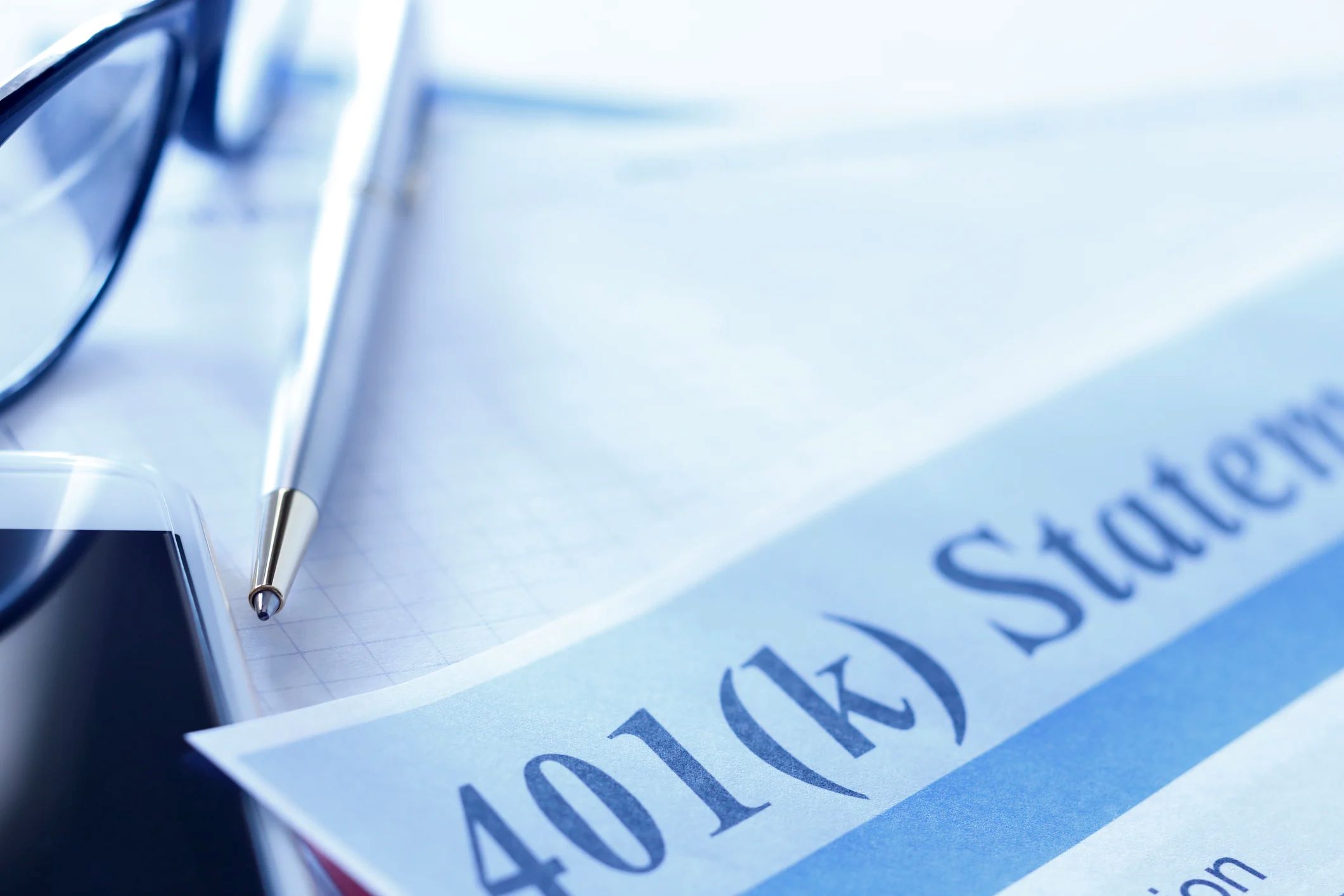

Finance
How Long To Keep Credit Card Statements
Modified: December 29, 2023
Learn how long you should keep your credit card statements for proper financial management. Explore finance tips and guidelines for organizing your financial records.
(Many of the links in this article redirect to a specific reviewed product. Your purchase of these products through affiliate links helps to generate commission for LiveWell, at no extra cost. Learn more)
Table of Contents
- Introduction
- Importance of Keeping Credit Card Statements
- Recommended Timeframe for Keeping Credit Card Statements
- Factors to Consider when Deciding How Long to Keep Credit Card Statements
- Options for Storing Credit Card Statements
- Best Practices for Organizing and Managing Credit Card Statements
- Conclusion
Introduction
When it comes to personal finance, keeping track of your credit card statements is essential. Credit card statements provide a detailed record of your transactions, helping you monitor your spending habits, track your expenses, and detect any unauthorized charges. But how long should you keep these statements?
In this article, we will explore the importance of keeping credit card statements and provide guidance on the recommended timeframe for storing them. We will also discuss the factors to consider when deciding how long to keep credit card statements, as well as the different options for storing them securely. Finally, we will offer some best practices for organizing and managing credit card statements to ensure you have all the necessary information at your fingertips.
It’s crucial to note that while this article provides general guidance, you should consult with a financial advisor or tax professional for specific advice tailored to your situation.
So, let’s dive in and discover how long you should keep credit card statements to stay financially organized and secure!
Importance of Keeping Credit Card Statements
Keeping your credit card statements is more than just a matter of staying organized. It serves several important purposes that can benefit your financial well-being in the long run.
First and foremost, credit card statements act as a detailed record of your transactions. They provide an itemized list of every purchase, payment, and fee associated with your credit card account. This information is valuable for budgeting purposes, allowing you to see exactly where your money is going and identify any areas where you may need to cut back on spending.
Additionally, credit card statements can help detect fraudulent activity on your account. Reviewing your statements regularly enables you to spot any suspicious charges or unauthorized transactions, which you can then report to your credit card issuer immediately. By catching and addressing fraudulent activity promptly, you can minimize the potential damage to your credit score and financial stability.
Another reason to keep your credit card statements is for warranty and insurance purposes. Many credit cards offer extended warranty protection or purchase protection for items bought with the card. Having access to your credit card statements can serve as proof of purchase and make it easier to file warranty or insurance claims if needed.
Furthermore, credit card statements can play a vital role in managing your taxes. If you use your credit card for business expenses or tax-deductible purchases, your statements can serve as evidence to support your deductions when filing your tax returns. By keeping your credit card statements, you can ensure that you have the necessary documentation in case of an audit or if you need to clarify any expenses claimed on your tax return.
Lastly, holding onto your credit card statements can be useful for resolving billing disputes with merchants. If you encounter billing errors or discrepancies, your statements serve as a record of the transactions and can help you provide evidence to the merchant or your credit card company to rectify the issue.
In summary, keeping your credit card statements is important for budgeting, detecting fraud, warranty and insurance purposes, tax management, and resolving billing disputes. By maintaining a record of your transactions, you can stay on top of your finances and protect yourself from potential issues that may arise.
Recommended Timeframe for Keeping Credit Card Statements
Now that we understand the importance of keeping credit card statements, it’s crucial to determine how long you should retain them. While there is no one-size-fits-all answer, there are some general guidelines to consider.
One common suggestion is to keep your credit card statements for at least one year. This timeframe allows you to compare your statements from month to month, identify any recurring charges, and reconcile your expenses. It also provides ample time to detect any discrepancies or fraudulent activities.
For certain transactions that may have additional warranty or insurance coverage, such as large purchases or travel expenses, it is advisable to keep the corresponding credit card statements for as long as the coverage period lasts. This way, you can easily access the necessary documentation if you need to make a claim or request a repair or refund.
When it comes to tax purposes, it is generally recommended to retain your credit card statements for at least three to seven years. This timeframe aligns with the IRS guidelines for retaining records for tax audits and potential inquiries. By keeping your statements for this period, you have the required documentation to support any deductions or business expenses claimed on your tax returns.
While the minimum recommended timeframe for keeping credit card statements is one year, it is always wise to assess your personal circumstances and consider retaining them for a longer duration if necessary. For example, if you are applying for a loan, mortgage, or credit card, having a more extensive transaction history can help as supporting documentation.
To avoid clutter and unnecessary storage of documents, you can opt to digitize your credit card statements. Scan or take photos of your statements and save them securely on your computer or in the cloud. Ensure that you have multiple backups to prevent any loss or accidental deletion of the files. Remember to keep the original hard copies until you have confirmed the digital copies are accurate and accessible.
It is worth noting that while we have provided general recommendations, specific situations and legal requirements may vary. Always consult with a financial advisor or tax professional for personalized advice regarding how long to keep your credit card statements based on your unique circumstances.
Next, we will explore the factors to consider when deciding how long to keep credit card statements to help you make an informed decision.
Factors to Consider when Deciding How Long to Keep Credit Card Statements
Deciding how long to keep your credit card statements can depend on several factors. It’s important to consider these factors to ensure that you retain the necessary records while also avoiding unnecessary clutter and storage burdens. Here are some key factors to consider:
- Tax obligations: If you use your credit card for business expenses or tax-deductible purchases, the IRS typically requires you to retain supporting documents for a certain period. Consult with a tax professional to understand the specific requirements for your tax situation.
- Warranty and insurance coverage: Some credit cards offer extended warranty protection or purchase insurance for certain purchases. Keeping the corresponding credit card statements for the duration of the coverage period is crucial to facilitate any potential claims.
- Personal financial goals: If you’re working towards long-term financial goals, you may want to retain your credit card statements for a longer duration. Having a comprehensive transaction history can be beneficial when applying for loans, mortgages, or credit cards, as it showcases your financial stability and responsibility.
- Account reconciliation: Keeping credit card statements for a reasonable timeframe allows you to compare your statements month to month, ensuring accuracy and identifying any recurring charges.
- Fraud detection: It’s essential to retain your credit card statements long enough to identify any fraudulent activity or unauthorized transactions. The longer you keep your statements, the higher the chances of detecting any suspicious charges.
- Billing disputes: In case of any billing errors or discrepancies, having access to your credit card statements is crucial for providing evidence to merchants or credit card companies to resolve the disputes.
It’s also important to keep in mind that some financial institutions or credit card issuers may have their own suggested guidelines for retaining credit card statements. Check with your bank or credit card company to understand any specific requirements they may have.
To strike a balance between retaining necessary records and managing clutter, consider digitizing your credit card statements. This allows you to save them securely on your computer or in the cloud, reducing the need for physical storage space and ensuring easy access when needed.
Ultimately, the decision of how long to retain your credit card statements should be based on your individual needs, legal requirements, and financial goals. Assessing these factors will help you determine an appropriate timeframe that suits your situation.
Next, let’s explore the different options for securely storing your credit card statements.
Options for Storing Credit Card Statements
Storing your credit card statements securely is essential to ensure easy access when needed and to protect your financial information from unauthorized access or loss. Here are some options for storing your credit card statements:
- Physical filing: One of the most traditional methods is to keep hard copies of your statements in a designated filing system. This could involve organizing them chronologically or categorizing them by year or type of expense. Be sure to store them in a secure location, such as a locked filing cabinet or a fireproof safe, to prevent unauthorized access and potential damage.
- Digital storage: In the digital age, many people prefer to store their credit card statements electronically. You can scan or take clear photos of your statements and save them on your computer or external hard drive. Make sure to organize them in a logical folder structure and encrypt them with a strong password. Additionally, consider utilizing cloud storage services for backup and easy accessibility from multiple devices.
- Email archiving: If your credit card statements are sent to you via email, you can create a separate folder in your email account specifically for storing these statements. Be sure to create a suitable folder structure within this folder to keep your statements organized and easily accessible. Ensure your email account has proper security measures, including a strong password and two-factor authentication.
- Online banking platforms: Many financial institutions provide online banking platforms that allow you to access and download your credit card statements. Take advantage of this feature and download your statements regularly. Save them in a secure location on your computer or cloud storage to ensure you have offline access to them.
- Financial management software: Utilizing financial management software can simplify the organization and storage of your credit card statements. These tools often have features that allow you to import and categorize your statements automatically. Be sure to choose reputable software with strong security measures to protect your financial data.
Regardless of the method you choose, it’s essential to implement security measures to protect your credit card statements from unauthorized access. This includes using strong passwords, enabling multi-factor authentication, and regularly updating your software and security systems to guard against potential threats.
Remember, it’s important to strike a balance between accessibility and security when deciding how to store your credit card statements. Consider the level of convenience you require, the sensitivity of the information, and the potential risks involved when making your decision.
Now that we’ve explored the options for storing credit card statements, let’s move on to some best practices for organizing and managing them effectively.
Best Practices for Organizing and Managing Credit Card Statements
Effectively organizing and managing your credit card statements can save you time, reduce stress, and ensure you have the information you need at your fingertips. Here are some best practices to help you stay organized:
- Create a system: Establish a systematic approach for organizing your credit card statements. You can categorize them by month, year, or type of expense. Find a method that works for you and stick to it consistently.
- Set a regular schedule: Dedicate specific times throughout the year to review, reconcile, and file your credit card statements. This ensures that you stay up to date and catch any errors or discrepancies promptly.
- Keep it digital: Consider digitizing your credit card statements for easier management. Save them in a secure folder structure on your computer or cloud storage. Be sure to name the files descriptively and include the corresponding date or period to facilitate quick retrieval.
- Backup your documents: Whether you choose physical or digital storage, always have a backup plan. Keep copies of your statements in a separate location or use a reliable backup service or external drive to ensure you have a second copy in case of loss or damage.
- Monitor your statements regularly: Review your credit card statements regularly to verify the accuracy of transactions and identify any unauthorized charges or errors. Report any discrepancies to your credit card issuer immediately.
- Shred or securely dispose of old statements: When you no longer need to keep your credit card statements, ensure they are properly disposed of to protect your sensitive information. Shred physical copies or use a secure file deletion method for digital files.
- Keep important information handy: Along with your statements, keep important contact information, such as the customer service number for your credit card issuer, readily accessible. This ensures you have the necessary details available if you need to resolve any issues quickly.
- Organize supporting documentation: If you have receipts or other supporting documents for specific transactions, consider arranging them with the corresponding credit card statements. This makes it easier to reference and substantiate expenses if needed.
- Review your financial goals: Regularly assess your financial goals and priorities to determine whether your credit card usage aligns with them. Regularly reviewing your statements can help you identify areas where you can cut back on spending or reallocate funds to meet your financial objectives.
By following these best practices, you can streamline the organization and management of your credit card statements, ensuring you have a clear overview of your expenses, staying on top of your financial health, and being prepared for any potential audits or inquiries.
Remember, every individual’s financial situation may vary, so it’s important to tailor these best practices to your specific needs and circumstances. By staying organized and being proactive, you’ll have peace of mind knowing that your credit card statements are securely managed and readily accessible when needed.
Let’s conclude our discussion on credit card statement management.
Conclusion
Keeping track of your credit card statements is an essential part of managing your personal finances. By understanding the importance of retaining these statements and following best practices for organization and management, you can stay financially organized and protect yourself from potential issues.
We discussed the significance of keeping credit card statements, including their role in budgeting, fraud detection, warranty and insurance claims, tax management, and resolving billing disputes. It’s clear that these statements provide valuable information for various aspects of your financial well-being.
When it comes to determining how long to keep credit card statements, consider factors such as tax obligations, warranty and insurance coverage, personal financial goals, account reconciliation, fraud detection, and billing disputes. While general recommendations exist, it’s crucial to tailor your decision based on your unique circumstances.
Whether you choose physical filing or digital storage options, ensure that you implement security measures to protect your credit card statements from unauthorized access. Regularly review and reconcile your statements, keeping supporting documentation organized and readily accessible when needed.
By adhering to best practices for credit card statement management, such as creating a system, setting a schedule, monitoring statements, and properly disposing of old records, you can maintain a clear overview of your expenses and financial goals.
Remember, the information provided in this article is general guidance. It’s always advisable to consult with a financial advisor or tax professional for personalized advice based on your specific circumstances.
So, take control of your financial well-being by keeping your credit card statements organized and secure. By doing so, you’ll have a clearer view of your spending habits, protect yourself from potential fraud, handle billing disputes with ease, and be prepared for tax obligations and financial audits.
In conclusion, a well-managed credit card statement can contribute to your overall financial success and provide peace of mind in your financial journey. Start implementing these practices today and enjoy the benefits of a well-organized financial life!














